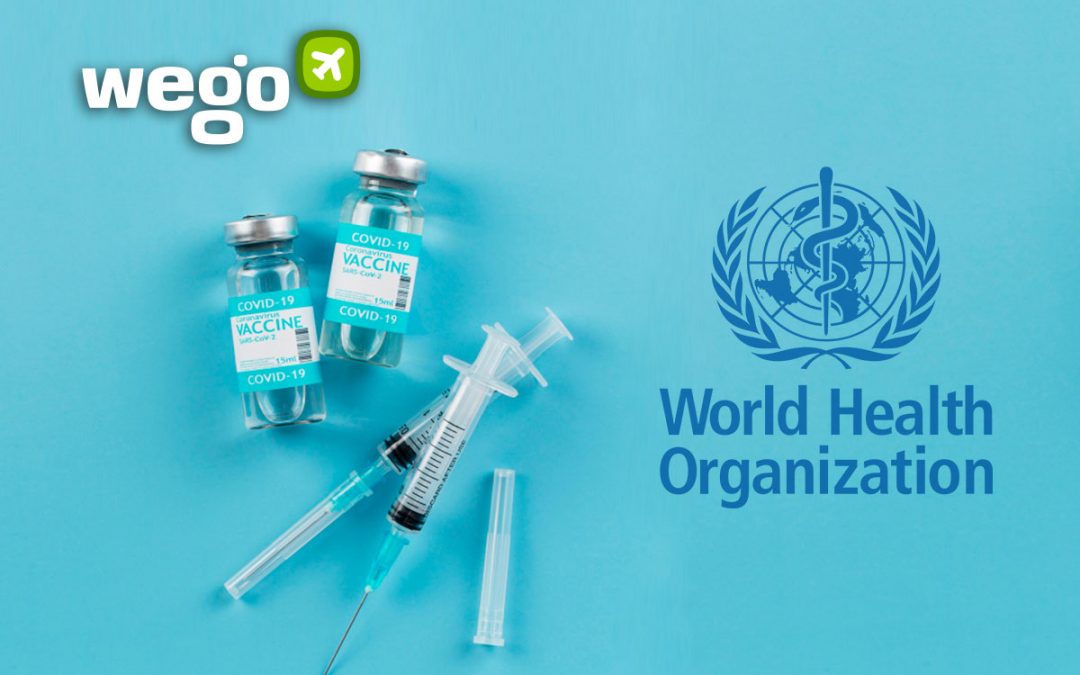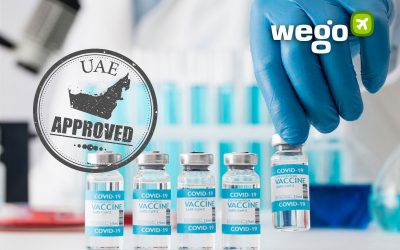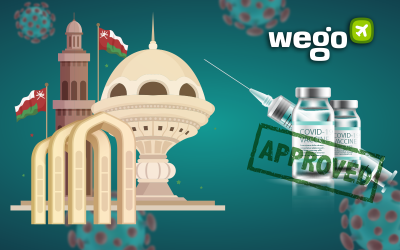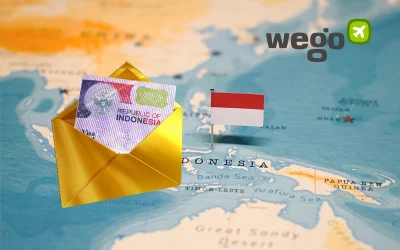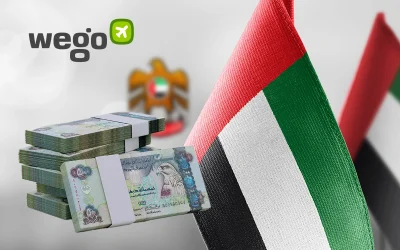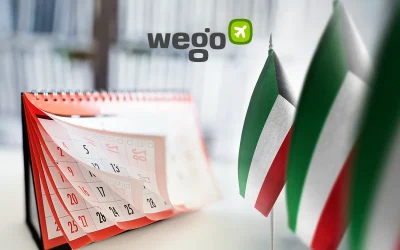This article is reviewed regularly (on a monthly basis) by Wego’s editorial team to ensure that the content is up to date & accurate.
Updated 29 August 2022
As the world inches closer to 100% vaccination each passing day, while on the other, questions about the safety and efficacy of COVID vaccines are being raised. In such a climate, approvals from international health regulatory bodies like the WHO and EMA have become pivotal.
Let’s take a closer look at which vaccines have been approved by the World Health Organization and European Medicines Agency so far.
Table of Contents
Significance of WHO and EMA-approved vaccine lists
The WHO’s EUL (Emergency Use Listing) acts as a benchmark for most countries to approve vaccines and allow entry to foreigners fully vaccinated with vaccines approved either by the WHO or EMA.
WHO approved vaccines 2022
Following are the list of vaccines approved by the World Health Organisation (WHO):
Pfizer/BioNTech: Comirnaty
The BNT162b2 is a messenger Ribonucleic Acid (mRNA) vaccine meaning that it carries genetic instructions that help the recipient’s cells to produce protein pieces that trigger immune system response.
On 31 December 2020, Comirnaty became the first vaccine to get a nod from the WHO. It has been approved in almost 149 countries across the globe, including the USA, the UK, the UAE, Saudi Arabia, Canada and Australia.
Oxford/AstraZeneca: Vaxzevria and Covishield
The ChAdOx1 COVID-19 vaccine is based on the virus’s genetic instructions for building the spike protein, which is stored using double-stranded DNA.
WHO approved three versions of the AstraZeneca vaccine so far: one in the EU, one produced by Serum Institute of India (SII) and the third by SKBio (Republic of Korea) on 15 February 2021 for emergency use as well as COVAX supply. AstraZeneca is the highest distributed vaccine in the world, with 149 countries having recognized it. Covishield has been authorized by around 49 countries, including India, Egypt, Maldives, and others primarily in Asia and Africa.
Johnson & Johnson: Ad26.COV2.S
The Janssen vaccine leverages the AdVac vaccine platform to engineer a common cold virus to carry genetic instructions into the arm cells where they construct a replica of the coronavirus spike, triggering the immune system.
The one-off vaccine was listed by the WHO for emergency use and COVAX roll-out on 12 March 2021. Around 113 countries, including Bahrain, South Africa, the USA and Kuwait have included the Janssen jabs in their immunization programs.
Moderna: Spikevax
The Moderna vaccine primarily works by injecting a fraction of the COVID-19 virus’ genetic code into the body. This will trigger the body’s immune response, therefore, creating antibodies capable of fighting the virus.
The WHO authorized Moderna for emergency use on 30 April 2021. The American vaccine has received approval in 88 countries, including the USA, France, Germany, Israel, Qatar, and Singapore.
Sinopharm: BBIBP-Corv
Sinopharm relies on the older but tested technology, which involves taking an inactivated form of the virus to stimulate the body’s immune response.
The Chinese pharmaceutical got the green signal from the WHO on 7 May 2021. So far, 93 countries, including Argentina, China, Lebanon, Pakistan, and Vietnam.
Sinovac: CoronaVac
Sinovac, too, is an inactivated virus vaccine, which means it is made from viral particles produced in a lab, which are then inactivated so they can’t infect with COVID-19.
It was approved by the WHO on 1 June 2021 and is currently being used and approved in around 56 countries including Brazil, Indonesia, the Philippines and Thailand.
Bharat Biotech: Covaxin
Covaxin is an inactivated virus-based COVID-19 vaccine developed by Bharat Biotech in collaboration with the Indian Council of Medical Research – National Institute of Virology.
The WHO’s Strategic Advisory Group of Experts on Immunization (SAGE) has approved Covaxin for emergency use in early November 2021. The vaccine is currently accepted in more than 14 countries including Mexico, Nepal, the Philippines and India.
Novavax: NVX-CoV2373
The Novavax COVID-19 vaccine is sold under the brand name Nuvaxovid. It has been described as a recombinant nanoparticle vaccine and has been developed by Novavax and the Coalition for Epidemic Preparedness Innovations (CEPI).
The WHO’s Strategic Advisory Group of Experts on Immunization (SAGE) has approved NVX-CoV2373 for emergency use on 17 December 2021. Novavax is currently being used and approved in around 39 countries, including the Philippines, Indonesia, Finland, and some EU nations.
Covovax: Novavax formulation
The vaccine, named Covovax, is produced by the Serum Institute of India under licence from Novavax and is part of the COVAX facility portfolio, giving a much-needed boost to ongoing efforts to vaccinate more people in lower-income countries.
The WHO issued an EUL for the vaccine on 17 December 2021. So far, it has been approved in 5 countries including India, Bangladesh and Indonesia.
CanSino: Convidecia
CanSino, also known as Convidecia is based on a modified human adenovirus that expresses the spike S protein of SARS-CoV-2. It is administered as a single dose. Convidecia was assessed under the WHO EUL procedure based on the review of data on quality, safety, efficacy, a risk management plan, programmatic suitability and a manufacturing site inspection conducted by WHO.
The vaccine received the nod from the WHO on 11 May this year and has been approved in over 10 countries, including China and Mexico.
WHO guide of approval
The World Health Organization’s Emergency Use Listing Procedure (EUL) is a risk-based procedure for assessing and listing unlicensed vaccines, therapeutics and in vitro diagnostics with the ultimate aim of expediting the availability of these products to people affected by a public health emergency.
In the case of vaccines, the following criteria must be met:
- The disease for which the product is intended is serious or immediately life-threatening, has the potential of causing an outbreak, epidemic or pandemic and it is reasonable to consider the product for a EUL assessment
- Existing products have not been successful in eradicating the disease or preventing outbreaks
- The product is manufactured in compliance with current Good Manufacturing Practices (GMP)
- The applicant undertakes to complete the development of the product and apply for WHO prequalification once the product is licensed
An external panel of experts convened by WHO (the Strategic Advisory Group of Experts on Immunization (SAGE), analyses the results from clinical trials, along with evidence on the disease, age groups affected, risk factors for disease, programmatic use and other information. SAGE then recommends whether and how the vaccines should be used. In addition to reviewing data for regulatory purposes, the evidence must also be reviewed for the purpose of policy recommendations on how the vaccines should be used.
The WHO’s Global Advisory Committee on Vaccine Safety (GACVS) monitors how approved vaccines behave in the real world and identifies any signals of adverse events following immunization. GACVS is an independent group of experts providing authoritative, scientific advice to WHO on vaccine safety issues of global or regional concern.
EMA approved vaccines 2022
Following are the list of vaccines approved by the European Medicines Agency (EMA):
Pfizer/BioNTech: Comirnaty
The BNT162b2 is a messenger Ribonucleic Acid (mRNA) vaccine meaning that it carries genetic instructions that help the recipient’s cells to produce protein pieces that trigger immune system response.
The EMA granted Pfizer a conditional marketing authorization on 12 December 2020.
Moderna: Spikevax
The Moderna vaccine primarily works by injecting a fraction of the COVID-19 virus’ genetic code into the body. This will trigger the body’s immune response, therefore, creating antibodies capable of fighting the virus.
The EMA granted Moderna a conditional marketing authorization on 6 January 2021.
Oxford/AstraZeneca: Vaxzevria
The ChAdOx1 COVID-19 vaccine is based on the virus’s genetic instructions for building the spike protein, which is stored using double-stranded DNA.
The EMA granted AstraZeneca a conditional marketing authorization on 29 January 2021.
As of 15 July, the EMA reportedly hasn’t received any application from the Serum Institute of India for the marketing authorisation of Covishield, and the vaccine isn’t under review.
Johnson & Johnson: Ad26.COV2.S
The Janssen vaccine leverages the AdVac vaccine platform to engineer a common cold virus to carry genetic instructions into the arm cells where they construct a replica of the coronavirus spike, triggering the immune system.
The EMA granted the Janssen vaccine a conditional marketing authorization on 11 March 2021.
Nuvaxovid: NVX-CoV2373 and Covovax
Nuvaxovid works by training the body to defend itself against COVID-19. The vaccine contains a version of a protein found on the surface of SARS-CoV-2 (the spike protein) and has an ‘adjuvant’, a substance to help strengthen the immune responses to the vaccine.
The EMA has recommended granting conditional marketing authorization for Novavax’s COVID-19 vaccine Nuvaxovid (NVX-CoV2373) on 20 December 2021 for individuals who are 18 years and above.
Valneva: COVID-19 Vaccine (inactivated, adjuvanted)
COVID-19 Vaccine (inactivated, adjuvanted) Valneva contains inactivated (killed) whole particles of the original strain of SARS-CoV-2 that cannot cause disease. It is the sixth vaccine recommended in the EU for protecting against COVID-19.
COVID-19 Vaccine (inactivated, adjuvanted) Valneva is now authorised across the EU. This follows the granting of a marketing authorisation by the European Commission on 24 June 2022.
EMA guide of approval
During the COVID-19 pandemic, the European Medicines Agency (EMA) is using the conditional marketing authorization procedure for expediting the approval of safe and effective COVID vaccines in the European Union.
The safety monitoring of vaccines involves a number of routine activities ranging from:
- assessing the way risks associated with the vaccine will be managed and monitored once it is authorized
- continuously monitoring suspected side effects reported by patients and healthcare professionals, identified in new clinical studies or reported in scientific publications
- regularly assessing reports submitted by the company holding the marketing authorization on the benefit-risk balance of the vaccine in real life
- assessing the design and results of post-authorization safety studies which were required at the time of authorization
Vaccines waiting to be approved
The process for submitting applications for WHO and EMA approvals is quite extensive, requiring several legal and technical formalities. While some vaccines have already received their sanctions, a few others are still in the process.
WHO
The following are some of the vaccines at different stages of pre-submission, dossier review, assessment, and decision:
- Gamaleya National Centre of Epidemiology and Microbiology’s “Sputnik V”
- Sinopharm’s “Vero Cell”
- CureVac AG’s “CVnCoV”
- Sanofi’s “CoV2 preS dTM-AS03”
EMA
The EMA’s Committee for Medicinal Products for Human Use (CHMP) conducts a rolling review of the clinical trial data of the vaccines. Only after it decides that enough evidence is available can the developer apply for marketing authorization.
The following four vaccines are under review:
- Gamaleya National Centre of Epidemiology and Microbiology’s “Sputnik V”
- COVID-19 Vaccine (Vero Cell) Inactivated
- COVID-19 Vaccine “HIPRA” (PHH-1V)

